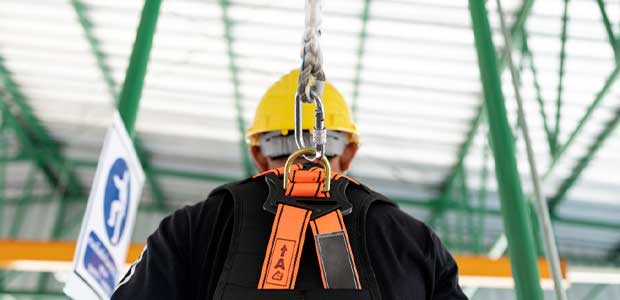
Fall Protection Training: Now’s the Time to Prepare Your Team
Slip, trip and fall hazards are everywhere. Now is the time to prepare your team.
- By Gen Handley
- Dec 01, 2022
Every winter, no matter what the industry is or how the work conditions are, slips, trips and falls consistently remains the top cause of workplace injuries and accidents.
These are injuries and accidents that not only impact the team member’s physical and emotional health but require valuable time off and may even involve costly litigation and fines.
It is imperative that the employer has protocols and measures in place to react to dangerous falls promptly and efficiently so that the severity of injuries is as low as possible. While such reactive safety measures are important to any successful safety program, proactive safety measures are even more integral, helping prevent incidents, like slips and falls, from occurring entirely. One of the most impactful, proactive OHS steps an employer can take is to regularly and thoroughly train their people in fall prevention and fall protection.
What Causes Slips and Trips?
Slip and trips hazards can exist everywhere—in some places you would not expect them. When assessing the workplace for slip hazards, look for conditions such as unattached, loose rugs and mats, uneven walking surfaces and work areas and slippery surfaces (wet and oily) due to weather or spills. On the other hand, potential areas for trips can be identified in places where your foot hits an object, resulting in the employee tripping and possibly falling.
Before these hazards cause any harm, they must be identified, documented and mitigated if possible. This can be accomplished through consultation with employees as well as regular and thorough hazard assessments of existing OHS dangers and risks.
What Types of Fall Protection Training Should You Provide?
When training your employees in fall prevention, you will need to do so based on three categories:
- General safety
- Site-specific safety (applicable to specific sites with particular safety challenges)
- Job-specific safety
General Safety Training. General safety training is applicable to all work sites and work circumstances, teaching practices that will prevent slips, trips and falls in any of your work environments. This can include education around standardized signage warning employees of possible tripping hazards when it gets icy or establishing a system to reduce clutter in high-traffic areas where people may trip and fall.
Site-Specific Safety Training. Site-specific safety training, however, addresses the particular, unique safety challenges of a specific work site such as an unstable walkway or a work area that is difficult to navigate by foot. If the employee is working at multiple sites, you may require multiple training sessions to address each location’s individual safety hazards and risks.
Job-Specific Safety Training. On an even more granular level, employers may need to provide task or job-specific safety training to prevent tripping and fall hazards. If employees use a certain piece of equipment that uses chords or other obstructive parts, they will need to be trained on how to work with this equipment safely and avoid falls when in use.
Additional Safety Measures to Prevent Workplace Slips and Falls
On top of safety training, employers also must provide and initiate additional measures for the safety of their team. What’s important is that when considering more safety steps, make sure they complement your team’s safety training and vice versa.
Complementary fall protection safety measures can include a safety-hazard reporting channel that allows staff to report fall hazards easily and discreetly as well as dependable technologies and wearables that use motion sensors to detect dangerous falls and impact, requesting immediate help if the worker is unconscious.
In addition to hazard assessments, consider performing a job safety analysis (JSA). A JSA is a process that incorporates new safety steps in specific work tasks. A proper JSA is incredibly detailed, addressing safety hazards in specific work on a very granular level.
Resources for Fall-Protection Safety Training
Fall Prevention Training Guide: A Lesson Plan for Employers. OSHA developed the “Fall Prevention Training Guide: A Lesson Plan for Employers,” which helps employers develop safety training programs in fall prevention with a focus on ladder safety, scaffolding safety and roofing work safety.
Fall Protection Safety Training Opportunities. The American Society for Safety Professionals has a number of fall protection resources including its Fall Protection Toolkit that provides a comprehensive guide to creating fall-protection plans, incorporating best practices into your workflow and using and training people for fall-protection equipment. 3M offers safety training and education for fall protection as well as working in confined spaces. These courses focus on teaching the “proper usage, inspection, and maintenance” of fall-arrest and confined-space systems across all industries.
Now’s the Time to Talk About Fall Protection
With colder and possibly increasingly slippery work conditions approaching some of us, now is the time to look at fall protection training and other resources that could make things safer this season. What’s important is that the discussion is started as soon as possible because it will make the issue known and your people more aware—and much safer—in the process.
This article originally appeared in the December 1, 2022 issue of Occupational Health & Safety.